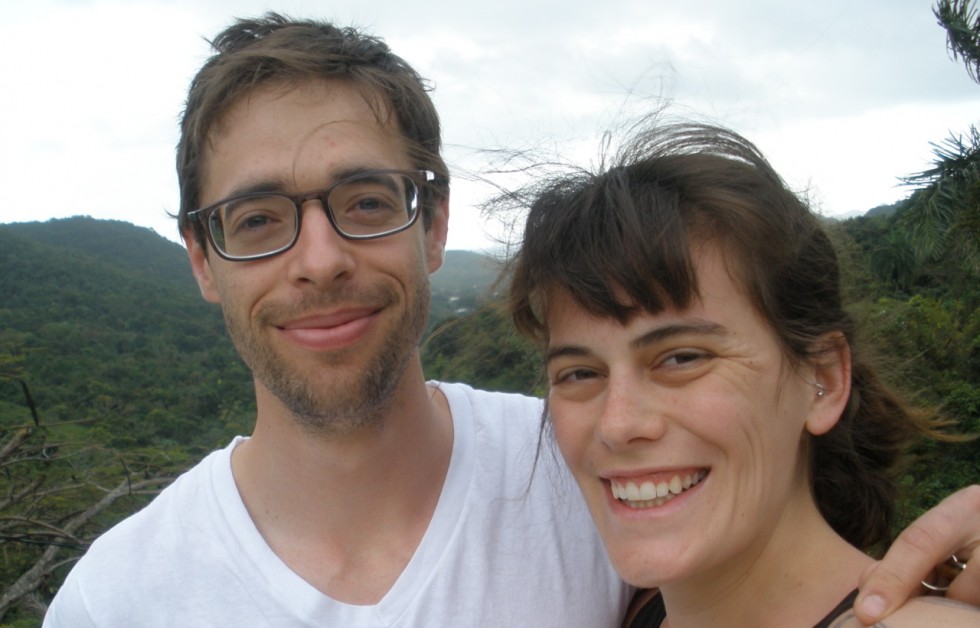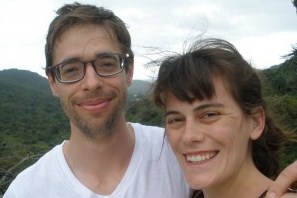
Adams Rackes is a Ph.D. candidate in Architectural Engineering who investigates computational tools for improving the design and operation of sustainable buildings. His current research focuses on using machine learning and optimization techniques to enable smarter ventilation control in commercial buildings, in order to both save energy and improve indoor air quality. This work combines many of his interests, including energy efficiency of buildings, indoor air processes and impacts, simulation and modeling, building mechanical systems and automation, and optimal estimation and control. He has also worked on designing intelligent networks for indoor air monitoring with low-cost sensors; assessing ventilation strategy impacts on health, economic, and energy endpoints; and statistically characterizing physical, thermal, and indoor air parameters in the built environment. Most recently, he received a Fulbright grant to conduct a year of research in Brazil, to better understand what combinations of building parameters can enable passive, naturally ventilated buildings to remain comfortable in hot climates. Natural Comfort, a publicly available early stage design tool, was a result of that research.
Adams is a 2014 NSF Graduate Research Fellow and has also received an ASHRAE Grant-in-Aid. He received M.S. and B.S. degrees from Drexel, both in Architectural Engineering, in 2014 and 2012, and is an Engineer-in-Training. He also holds a B.A. in History and Literature from Harvard University, and formerly worked as a welder. He lives in Philadelphia with his wife and son.
Journal Publications
Rackes, A., Melo, A.P., & Lamberts, R. (2016). Naturally comfortable and sustainable: informed design guidance and performance labeling for passive commercial buildings in hot climates. Applied Energy, 174, 256–274. http://doi.org/10.1016/j.apenergy.2016.04.081.
Rackes, A., & Waring, M.S. (2016). Do time-averaged, whole-building, effective volatile organic compound (VOC) emissions depend on the air exchange rate? A statistical analysis of trends for 46 VOCs in U.S. offices. Indoor Air, 26, 642-659. http://doi.org/10.1111/ina.12224.
Hamilton, M., Rackes, A., Gurian, P. L., & Waring, M.S. (2016). Perceptions in the U.S. building industry of the benefits and costs of improving indoor air quality. Indoor Air, 26, 318–330. http://doi.org/10.1111/ina.12192.
Li, X., Tan, H., & Rackes, A. (2015). Carbon footprint analysis of student behavior for a sustainable university campus in China. Journal of Cleaner Production, 106, 97–108. http://doi.org/10.1016/j.jclepro.2014.11.084.
Rackes, A., & Waring, M.S. (2014). Using multiobjective optimizations to discover dynamic building ventilation strategies that can improve indoor air quality and reduce energy use. Energy and Buildings, 75, 272–280. http://doi.org/10.1016/j.enbuild.2014.02.024.
Rackes, A., & Waring, M.S. (2013). Modeling impacts of dynamic ventilation strategies on indoor air quality of offices in six US cities. Building and Environment, 60, 243-253. http://doi.org/10.1016/j.buildenv.2012.10.013.
Conference Presentations
Rackes, A., Ben-David, T., & Waring, M.S. (2016, September). Toward making ventilation decisions based on expected outcomes: A flexible multi-criteria framework. Paper presented at ASHRAE/AIVC IAQ 2016, Alexandria, VA, USA.
Rackes, A., & Waring, M.S. (2016, September). Spatial resolution and sensor accuracy in routine indoor air quality monitoring networks: are more sensors better? Paper presented at ASHRAE/AIVC IAQ 2016, Alexandria, VA, USA.
Rackes, A., Hamilton, M., Gurian, P., & Waring, M.S. (2016, July). Do building industry professionals and stakeholders believe what IAQ experts think is true? Paper presented at Indoor Air 2016, Ghent, Belgium.
Rackes, A., Ben-David, T., & Waring, M.S. (2016, July). An integrated utility maximization approach to next-generation commercial building ventilation. Paper presented at Indoor Air 2016, Ghent, Belgium.
Rackes, A., da Fonseca, R.W., Beck, E.O., Scalco, V.A., Palladini, G.D., & Lamberts, R. (2015, October). Avaliação do potencial de conforto térmico em escolas naturalmente ventiladas. Paper presented at the Encontro Nacional de Conforto no Ambiente Construído (ENCAC) 2015, Campinas, Brazil.
Hamilton M., Rackes A., Gurian P.L., & Waring M.S. (2015, December). Mental models of indoor air quality: does anybody believe the research? Poster presented at Society for Risk Analysis Annual Meeting, Arlington, VA.
Rackes, A., Ben-David, T., & Waring, M.S. (2014, July). Statistical models of whole-building volatile organic compound emission rates in U.S. offices. Paper presented at Indoor Air 2014, Hong Kong, China.
Rackes, A., & Waring, M.S. (2013, October). Advanced integrated indoor air quality and thermal air movement strategies. Paper presented at ASHRAE IAQ 2013, Vancouver, Canada.
Rackes, A., & Waring, M.S. (2012, July). Modeling impacts of dynamic ventilation strategies on indoor air quality over the United States office sector. Paper presented at Healthy Buildings 2012, Brisbane, Australia.
Email: aer37 [at] drexel [dot] edu
Research Gate
ORCID
Google Scholar
